5 Images for 5 Years: NASA's Black Hole Hunter Mission Celebrates Anniversary
Nustar
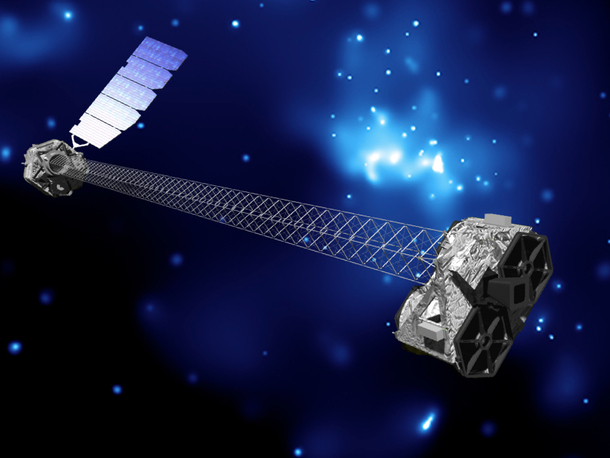
Today marks the five-year anniversary of NASA's NuSTAR mission. To celebrate the occasion, the project's principal investor selected her five favorite images from the probe's history.
NuSTAR (Nuclear Spectroscopic Telescope Array) is the first satellite mission to explore the universe in high-energy X-rays. This range of light reveals energetic phenomena like supernovas, or exploding stars; neutron stars, or nuggets of material left after a stellar explosion that contains the densest form of regular matter in the universe; and regions of fast-moving matter, swirling around the periphery of massive black holes.
A buried black hole
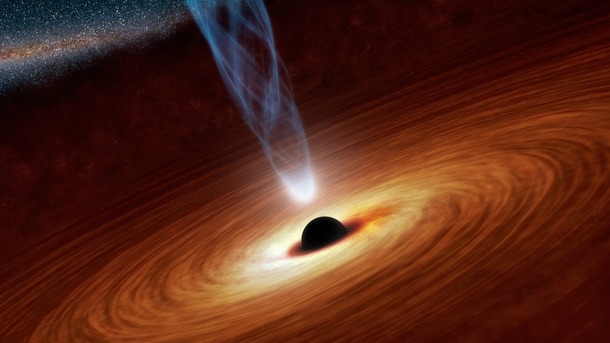
Harrison's first choice is an artist's concept of a spinning black hole that has created a whirlpool of matter around itself. The piece was created to illustrate an early discovery made by the NuSTAR team that wouldn't have been clearly resolved in an image from the satellite's data.
Black holes are difficult to study largely because they don't reflect or emit light. Astrophysicists think a monster black hole lies at the center of most galaxies, but these beasts are typically obscured by clouds and dust, which creates another barrier to studying them. But X-rays radiated by material swirling around those monster black holes can penetrate gas and dust. NuSTAR made the first definitive measurement of a black hole's spin. This finding confirmed some theories about black holes, and helped scientists better understand these mysterious cosmic monsters.
"NuSTAR's high-energy X-ray vision allowed us to distinguish between models that explain what produces black holes' X-ray emissions, and this information led us to conclude that the observed black hole is rapidly spinning," Harrison said.
A radioactive explosion
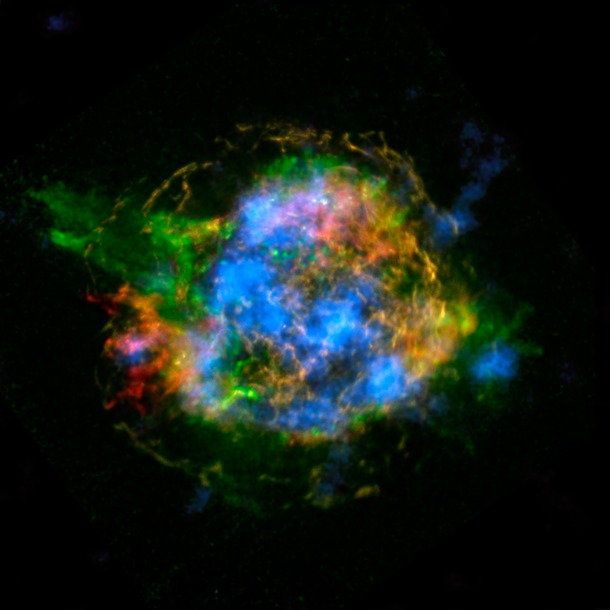
This colorful image shows Cassiopia A, a star that exploded as a supernova 350 years ago, as seen from Earth. The blue indicates regions of radioactive material, imaged by NuSTAR. While other telescopes could detect signs of radioactivity coming from Cassiopia A, they lacked the ability to pinpoint the source of those signals and create a map of how the material was distributed in the supernova remnant.
"This is a beautiful image, and one of the things we built NuSTAR to do — to make the first-ever map of emission from radioactivity in the remnant of an exploded star," Harrison said. "We spent years developing specialized detectors to have the capability to make this image. From the image, we were able to determine the mechanism that caused the star to explode."
The distribution of radioactive material imaged by NuSTAR (as well as nonradioactive material imaged by NASA's Chandra X-ray Observatory) "supports a theory referred to as 'mild asymmetries' [in which] material sloshes about at the heart of the supernova, reinvigorating a shock wave and allowing it to blow out the star's outer layers," according to NASA.
A bright pulse
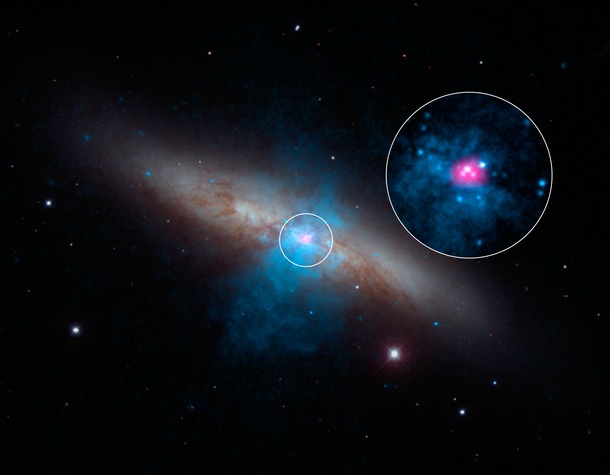
"This result was one of the biggest surprises from NuSTAR," Harrison said of the magenta object in this image of Messier 82, also known as the Cigar Galaxy.
"We detected pulsing from an object in a galaxy that everybody had assumed was a black hole, thereby showing it was actually a stellar remnant called a pulsar," Harrison said. "At the time, it was by far the brightest pulsar known. At first nobody believed it, but the signal was so strong and clear."
Pulsars are a type of neutron star that, while spinning rapidly, radiate bright beams of light, like a lighthouse. If those beams sweep across the field of view of astronomers on Earth, the pulsar appears as if it is pulsing on and off. This pulsar was bright enough to earn the title of ultraluminous X-ray source (ULX).
"Previously, all ULXs were suspected to be massive black holes up to a few hundred times the mass of the sun," according to another statement from NASA. The discovery of the ULX pulsar in Messier 82 changed things, and two other ULX pulsars have been found since.
The sun in color
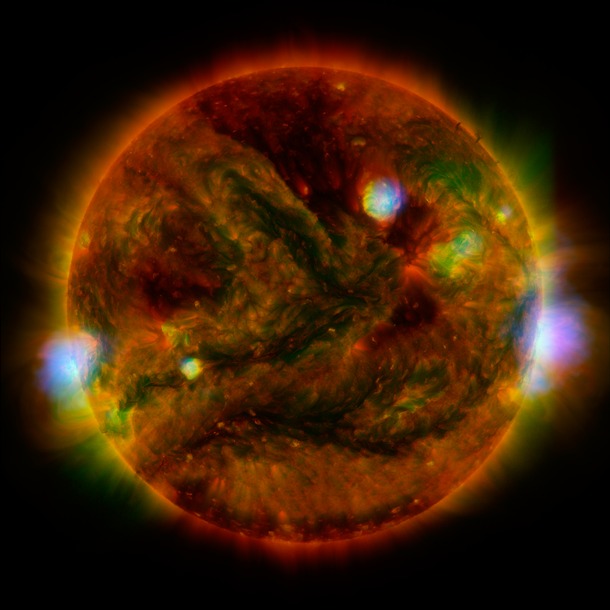
This sensational snapshot of the sun was created using data from three missions: NuSTAR's high-energy X-rays are in blue, showing regions where "microflares" erupted; low-energy X-rays from the Japanese Space Agency's Hinode spacecraft are in green; and extreme ultraviolet light from NASA's Solar Dynamics Observatory (SDO) is yellow and red, according to NASA.
"With NuSTAR, we see flaring, active regions of the sun where high-energy particles are being created. NuSTAR was built as an astrophysics mission, not to study the sun," Harrison said. "People thought we were crazy at first to study the sun. But now, by studying the sun with much greater sensitivity in high-energy X-rays, we are contributing to the field of solar physics."
Buried treasure
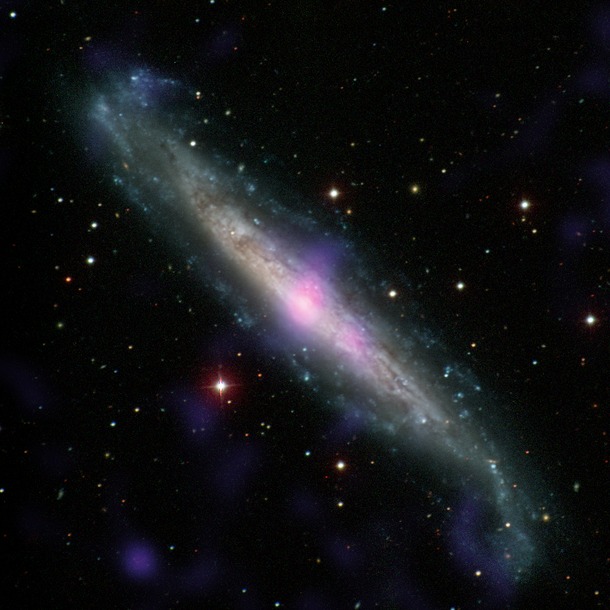
"This image illustrates another job NuSTAR was designed to do — to find hidden black holes buried by dust and gas," Harrison said.
The image shows galaxy NGC 1448 captured in optical light by the Carnegie-Irvine Galaxy Survey at the Las Campanas Observatory in Chile. The X-ray light coming from the center of the galaxy was captured by NuSTAR, and revealed the presence of a monster black hole, hidden by thick clouds of gas and dust. The material close to the black hole radiates X-rays that can penetrate the clouds even though many other wavelengths of light cannot.
Follow Calla Cofield @callacofield. Follow us @Spacedotcom, Facebook and Google+.
Get the Space.com Newsletter
Breaking space news, the latest updates on rocket launches, skywatching events and more!
Join our Space Forums to keep talking space on the latest missions, night sky and more! And if you have a news tip, correction or comment, let us know at: community@space.com.

Calla Cofield joined Space.com's crew in October 2014. She enjoys writing about black holes, exploding stars, ripples in space-time, science in comic books, and all the mysteries of the cosmos. Prior to joining Space.com Calla worked as a freelance writer, with her work appearing in APS News, Symmetry magazine, Scientific American, Nature News, Physics World, and others. From 2010 to 2014 she was a producer for The Physics Central Podcast. Previously, Calla worked at the American Museum of Natural History in New York City (hands down the best office building ever) and SLAC National Accelerator Laboratory in California. Calla studied physics at the University of Massachusetts, Amherst and is originally from Sandy, Utah. In 2018, Calla left Space.com to join NASA's Jet Propulsion Laboratory media team where she oversees astronomy, physics, exoplanets and the Cold Atom Lab mission. She has been underground at three of the largest particle accelerators in the world and would really like to know what the heck dark matter is. Contact Calla via: E-Mail – Twitter









